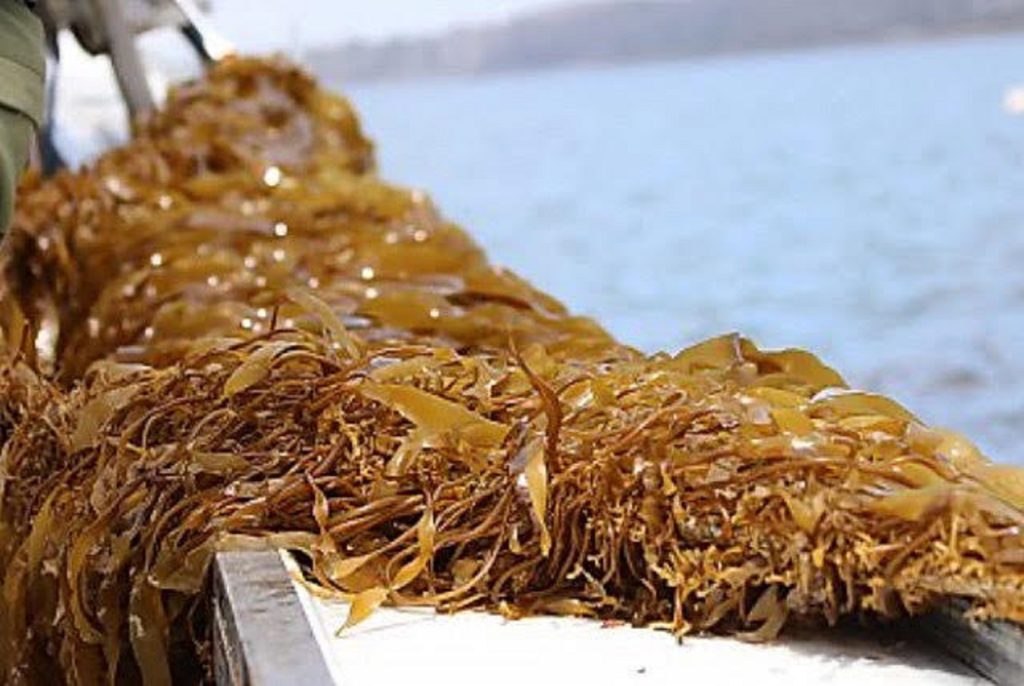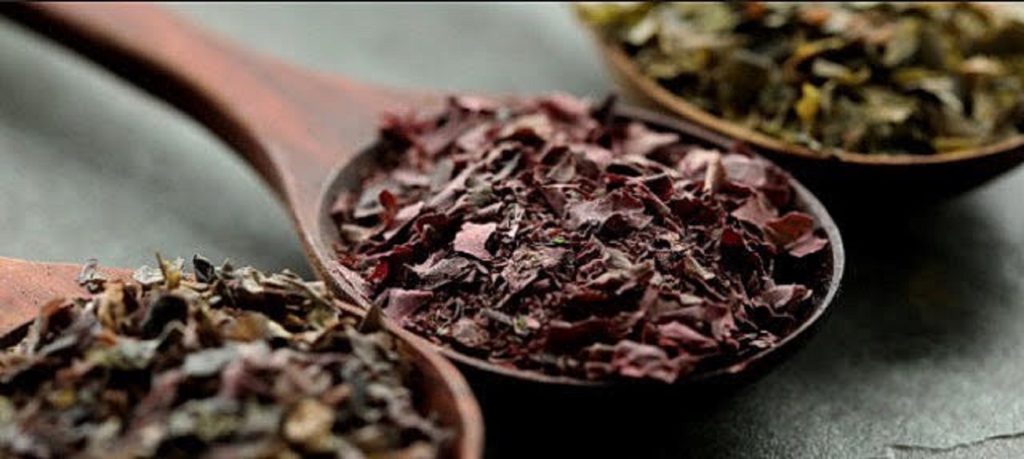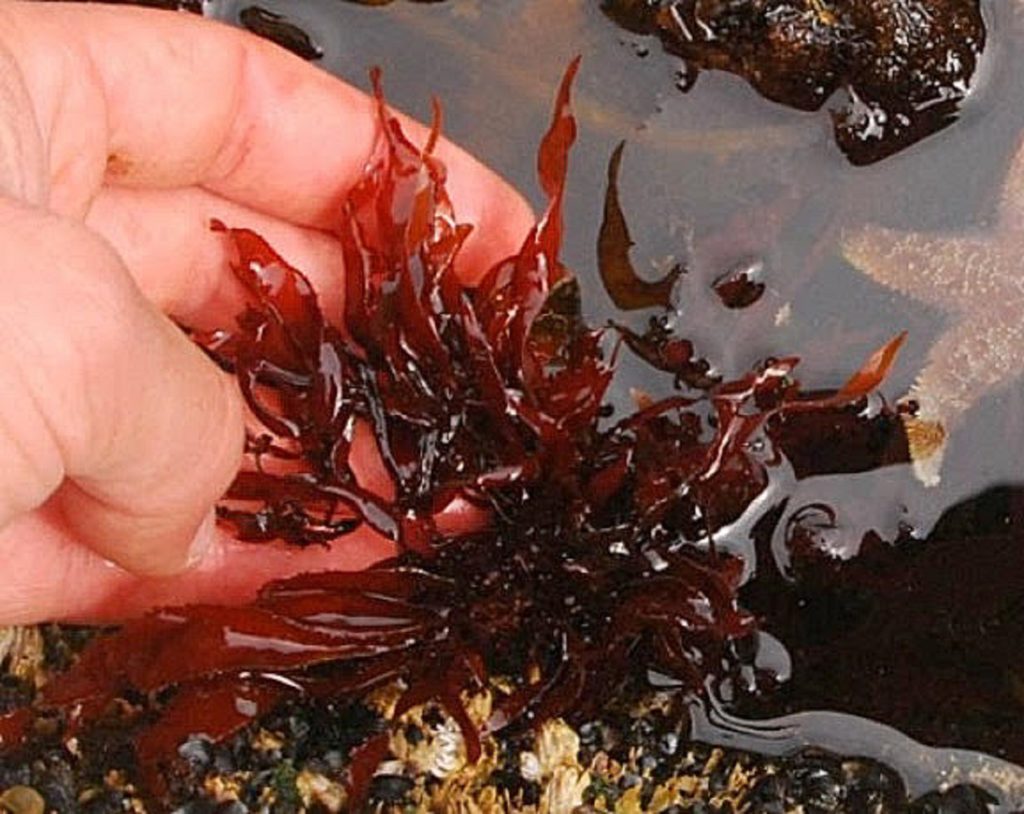
All About Seaweed by W1tchsbrew
Be sure to check her Etsy shop Wood ov Wyrd
Seaweed – What Is It?:
As a long-standing earth dweller of millions of years, Seaweed has a primitive history of thriving within oceans, rivers, and lakes as part of the marine algae family.
Exceptionally diverse, there are over 10,000 species, with three main types:
brown (Phaeophyceae),
green (Chlorophyta),
and red (Rhodophyta).
Ancient usage of Seaweed has extended across food, medicine and even land fertilizer.
Seaweed – On the Menu:

Considered by many to be a “superfood” due to its wide variety of nutrients, Seaweed has been a staple of several Asian cultures for centuries.
While its popularity in the western world is a more recent event, as more people discover the many benefits this vegetable has to offer, it’s quickly becoming part of a healthy, balanced diet for a large number of Americans as well.
Many species of Seaweed are well-known for their digestive health properties.
Seaweed prompts the release of enzymes that promote nutrient absorption. These enzymes also promote fat metabolism. Seaweed also enhances the work of good gut bacteria while guarding against the effects of harmful bacteria.
Seaweed – Physical Healing Properties:

Algae have been used as medication in China and Japan for hundreds of years, and seaweed was (and is) a substantial part of the daily diet and traditional herbal medicine in these countries.
Seaweed is regarded in those regions as a treatment for tuberculosis, rheumatism, colds, open wounds and intestinal worms.
Today, some skin care companies will use Seaweed in their product as it is highly regarded for its skin health benefits.
Seaweed grows in shallow water and deep, in rivers and lakes as well – though the Seaweed popular in skin care always comes from the sea.
Seaweed is also an important part of Ayurvedic medicine (a Hindu healing system from India), thalassotherapy (saltwater therapy), phytotherapy (herbal medicine), and macrobiotic cuisine.
Seaweed Metaphysical Properties:
Element: Water
Alchemical Planet: Moon
Astrology signs: Cancer, Pisces, Scorpio

Witches call Seaweed “Lady’s Tree”. In general, it is considered a carrier of good luck and abundance.
Seaweed is also believed to be an effective tool in summoning entities and energies which dwell in the sea such as:
- Mermaids and Mermen to ask for their help.
- Undines – they are usually called the Elementals of the Water and the Sea.
- Gods and Goddesses of the Sea like Poseidon, Amphitrite, Rán, Njord and Triton.
- Nymphs who dwell nearby.
- Summoning the Winds.
The Sea itself is believed to be pure and cannot be desecrated. Therefore, its salt is believed to possess unlimited banishing powers.
As an ocean plant, Seaweeds are said to embody the banishing powers of the sea and are used commonly for repelling negativity.
Sea Witches gather Seaweed and place it outside their doors, on door knobs and beside doorsteps to change bad luck and drive away dark energies.
Seaweeds can even be kept in vases, usually on mantelpiece or over the hearth and fireplace, to protect the house against violence, destructive fire and physical harm.
The healing energies of the ocean can be channeled through Seaweed in many ways and can be used in instances such as:
- Recovering from trauma
- Balancing emotion
- Reducing stress or
- Cleansing one’s aura
Seaweed – Symbolism and Spirituality:

Seaweed is a symbol of fertility as it is a plant that grows in the sea and reproduces quickly, producing many seeds or spores that drift on ocean currents and are eventually deposited on land.
Seaweed is also a symbol of nourishment and is associated with life, growth and the earth.
The meaning of this plant’s growth pattern suggests that an individual may be able to reach their goals quickly through hard work.
Seaweed is a common sight in many people’s dreams. It has various meanings, ranging from fertility to spirituality, depending on the context in which it was seen.
In general, however, seeing seaweed in your dream can indicate that you are going through some type of life change or spiritual transformation.
You may also see seaweed in your dream as a sign of prosperity and abundance.
Further Resources:
The Seaweed Cookbook covers all aspects of seaweed. It is for those who would like to incorporate this powerful food into their diet and it is for those who already enjoy it and want to discover new recipes. The book explains the benefits of eating seaweed, where to buy it, how to collect it (if you’re lucky enough to live seaside), and how to dry, store, soak and handle it as an ingredient. Most importantly, there are 50 easy and delicious recipes.
7 Surprising Health Benefits of Eating Seaweed
Seaweeds of the Pacific Coast : common marine algae from Alaska to Baja California
